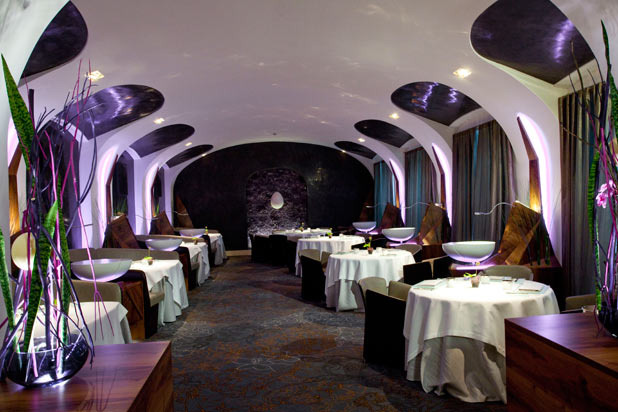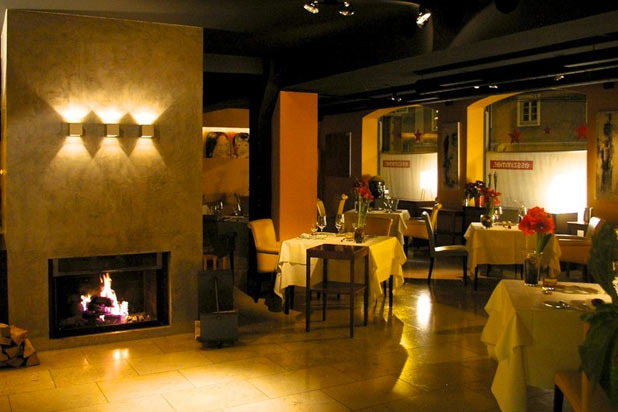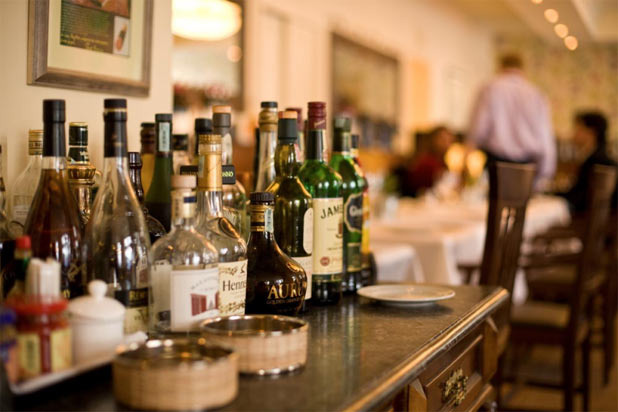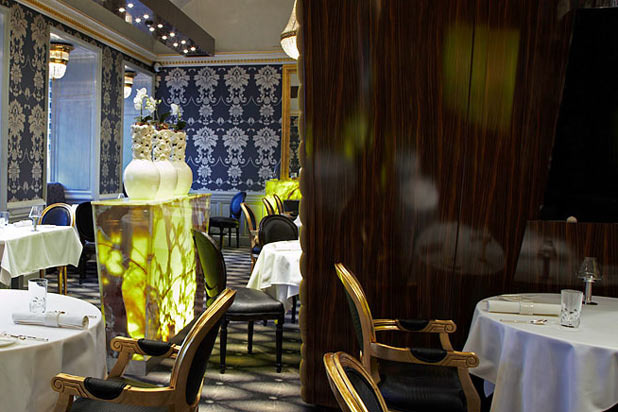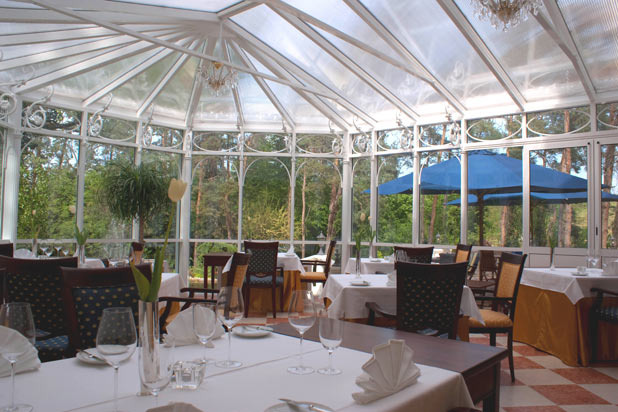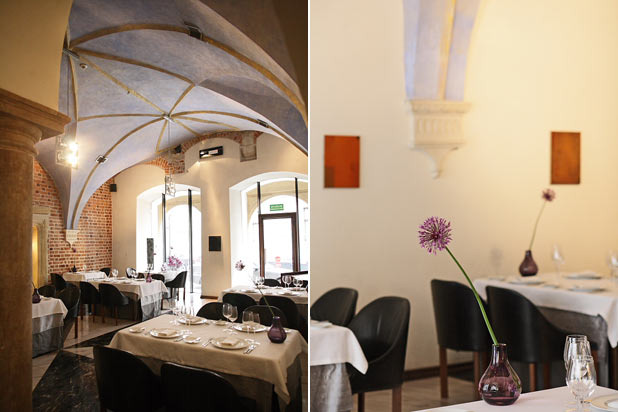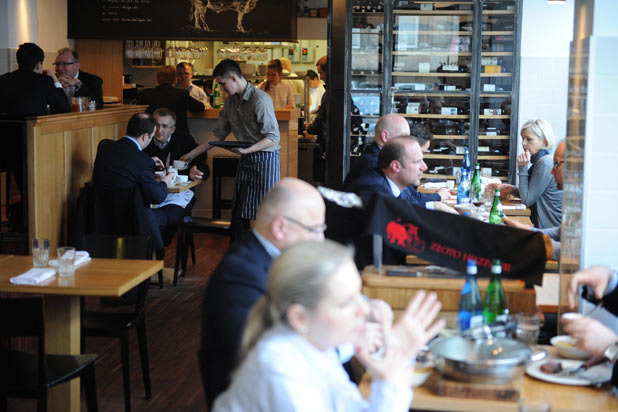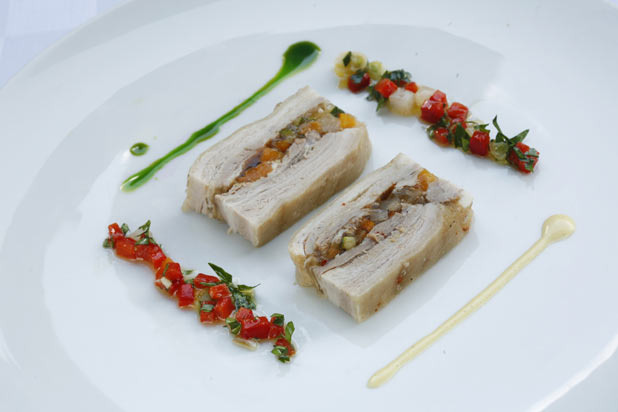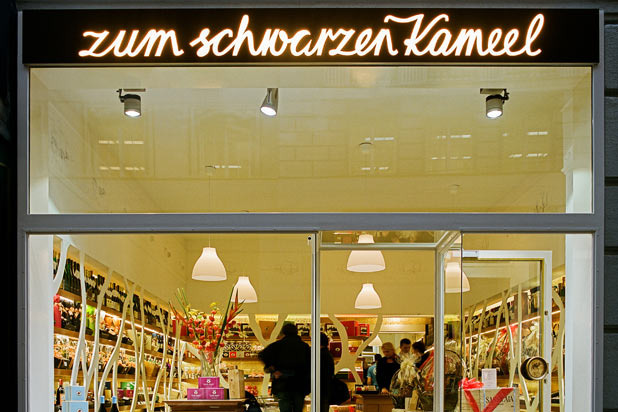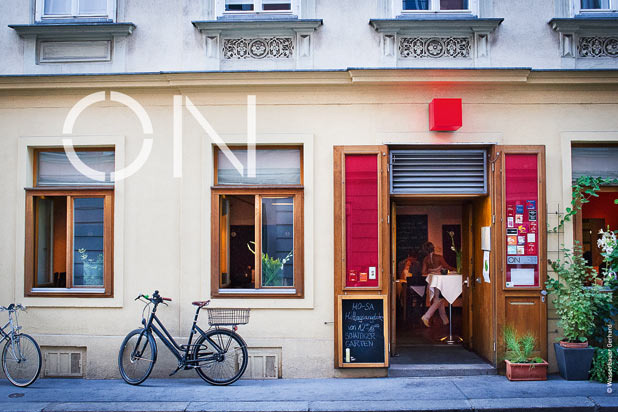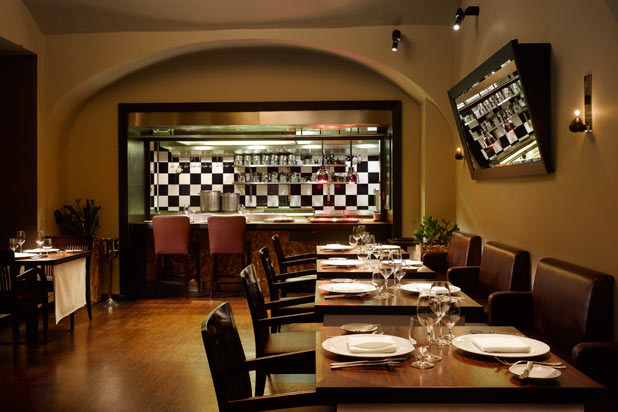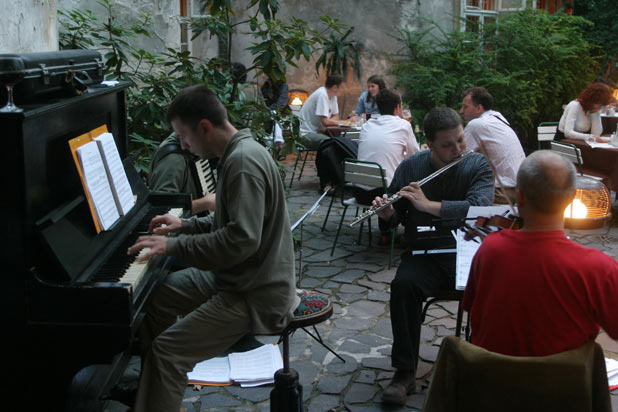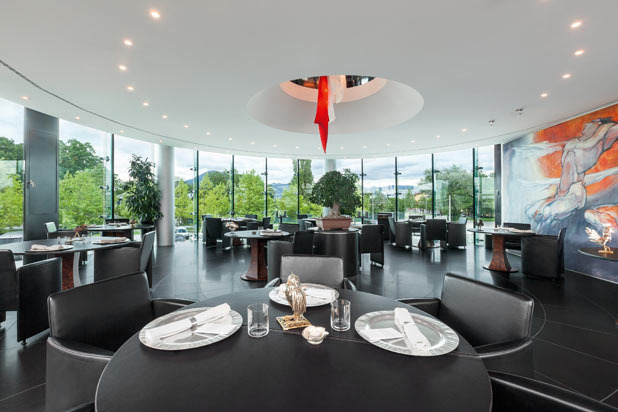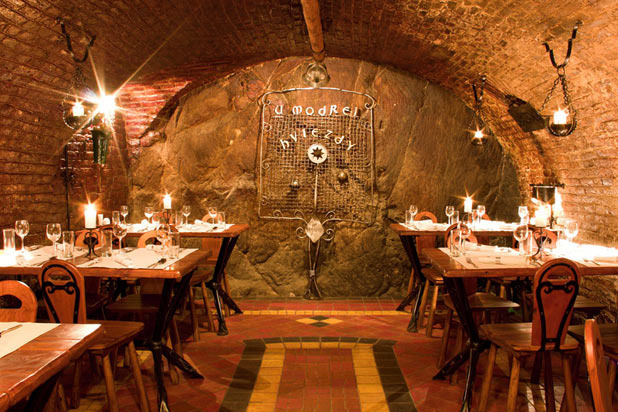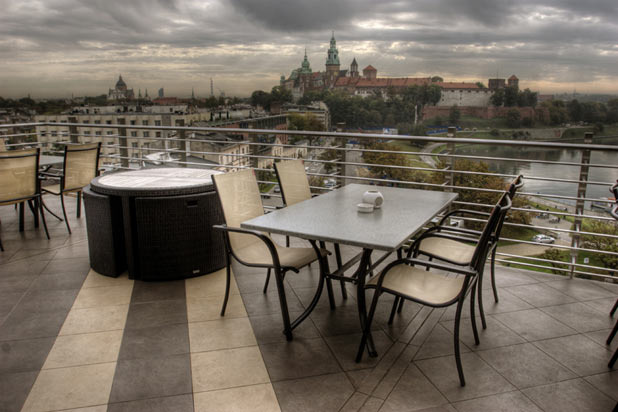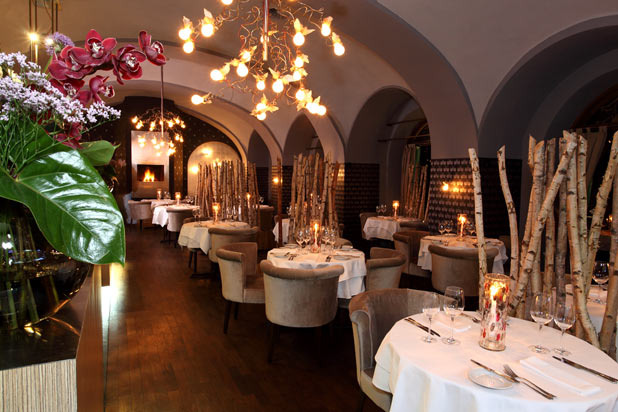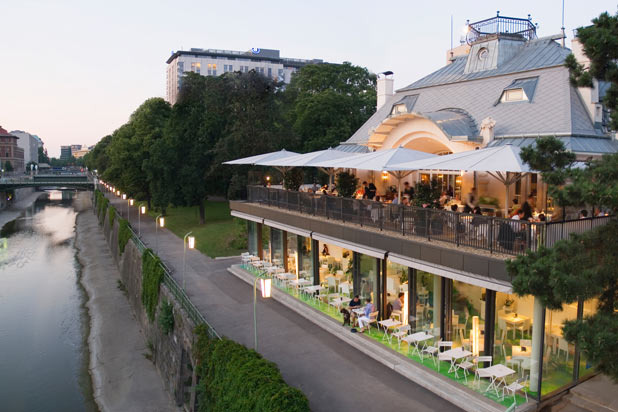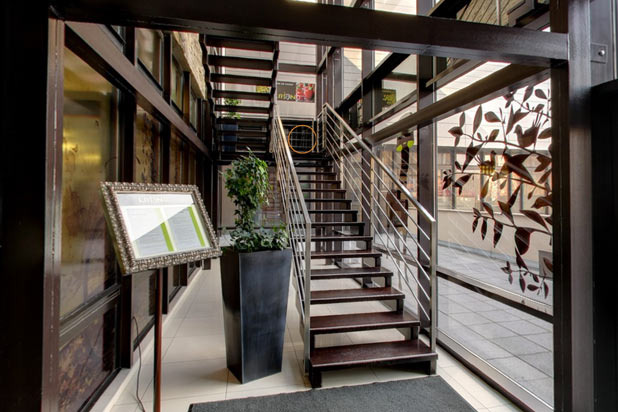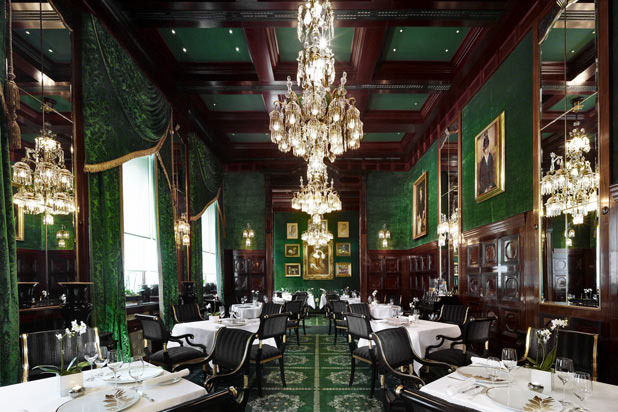20 Best Restaurants In Central Europe Slideshow
20. Palais Coburg (Vienna)
You know you're in for an elegant experience as soon as you reach the portico of the opulent, neoclassical Palais Coburg.The grandeur and splendor of the architecture of this former palace, now a luxury hotel, is a fitting prelude to two-Michelin-starred chef Silvio Nickol's masterful menu at the hotel's restaurant. The room's pristine white walls, crisp white tablecloths, and simple, light brown chairs set the scene for an ethereal epicurean experience which includes elaborate creations like duck liver on fir leaves and bark; turbot with pumpkin and nasturtiums; and pork cheek with radish and mustard.
19. Esszimmer (Salzburg, Austria)
The options at Esszimmer change often, with chef Andreas Kaiblinger serving four new menus every five weeks. The Michelin-stared Kaiblinger brings his expertise to the table with artfully presented dishes that combine a myriad of flavors, like marinated trout with pumpkin rösti and pumpkin-flavored vinegar; saddle of venison with red cabbage and polenta; and sautéed pigeon breast with braised leeks and sweet potato purée. The restaurant's décor offers such modern accents as cube-shaped lights and whimsical, colorful chairs, and large windows offer a view of the kitchen so guests can enjoy not only the taste of their meals but the art of its preparation as well.
18. Vár: a Speiz Restaurant (Budapest)
Dine on traditional Hungarian dishes at Vár: a Speiz Restaurant, a casual restaurant with a bistro feel. Chef Zoltan Feke has worked with owner Károly Rudits for nearly two decades, dating back to their first venture, Lou-Lou, a gourmet restaurant the duo opened in 1996 and earning a reputation as one of the best places in Budapest before closing in 2008. Not dismayed, Feke and Rudits have collaborated once more at Vár: a Speiz Restaurant with elaborate dishes like lamb shank confit with aubergine cream and parsley salad, and Argentine beef fillet Rossini with duck foie gras and crispy potatoes.
17. Onyx (Budapest)
The 55-seat Onyx, with its colored walls, ceiling-high suede banquets, and sumptuous leather-backed chairs, is the epitome of elegance. Parents of small children are encouraged to leave them at home, as the culinary journey here can take between three and four hours for those who order the degustation menu. Executive chef Szabina Szulló and sous-chef Tamás Széll work together to develop dishes with varied flavors, like the marinated goose liver with plum, and roasted duck liver with beetroot and green apple. T
16. Chateau Visz (Berencsepuszta, Hungary)
Chef Zoltán Huszák changes the menu at the restaurant at Chateau Visz, on Lake Balaton, daily. Huszák considers not only the flavor profiles of the dishes he creates but also their visual appeal. He combines traditional cooking techniques with modern molecular gastronomy to create unique and inspired dishes. Each plate of the chef's seven-course meal, prepared from seasonal, regional ingredients, like local catfish and lamb, is adorned with edible flowers and herbs from the chateau's garden, yielding course after course of edible art.
15. Restaurant Trzy Rybki (Kraków, Poland)
Head chef Pawel Twardosz uses regional ingredients in his creative interpretation of traditional Polish recipes at Trzy Rybki, where the menu changes seasonally to reflect available ingredients. Located on the ground floor of the Stary Hotel, the 50-seat restaurant occupies the former premises of two legendary Polish restaurants of an earlier era, Feilguta and Pod Trzema Rybami, but is on the way to establishing a lasting reputation of its own. Summer asparagus and artichokes have given way to venison and mushrooms on the menu, with the chef's current recommendations including fois gras with candied pears and linguine with lobster.
14. Butchery & Wine (Warsaw, Poland)
In less than two years, Butchery & Wine has made a name for itself as one of the top restaurants in Poland. Owner Daniel Pawelek has created a modern space with clean white walls and dark wood tones, but it's the restaurant's mission statement – "love what you eat" – that has helped this steakhouse rise above its competitors. Try starters like veal shortbreads with porcini mushrooms and bacon or foie gras parfait with red onion marmalade, and mains from the meat-laden grill menu like aged beef fillet with fondant potato, spinach, and truffles, or rack of lamb with favas, chantarelles, and cherry tomatoes.
13. Csalogány 26 (Budapest)
The tiny Csalogány 26 has a simple interior of delicate wooden chairs, white tablecloths, and cream walls, but the food that grabs diners' attention.The seasonal menus composed by chef Balázs Peth offers a range of international flavors like the duck liver with bulgur and Scottish salmon with caper risotto.
12. Zum Schwarzen Kameel (Vienna)
Zum Schwarzen Kameel dates to 1618 and was rebuilt in the early 1900s, and the wood-paneled walls, period chandeliers, and century-old furniture give it a timeless feel. Chef Christian Domschitz serves a monthly-changing menu of dishes like goose liver in mandarin and soya glaze, lobster medallions in curry-orange marinade, and wild whitefish with scallops. Johann Georg Gensbichler, sommelier and cheese expert, offers his expertise to help guests navigate the 800-bottle-plus wine list. The more casual, open-faced spicy meat salad and roast beef sandwiches from the restaurant's delicatessan have a cult-like following in Vienna.
11. ON (Vienna)
Chef Simon Xie Hong describes ON as "an up-to-date Chinese restaurant with the look and feel of a cozy pub." Hong serves dishes inspired by the cuisine of Wenzhou, in southeastern China, but with Austrian products and accents. That means dishes like chicken with chanterelles, sea bass with sauerkraut, and fried rice with Mangalitza pork.
10. La Degustation Bohême Bourgeoise (Prague)
Having worked in Germany, Italy, Portugal, and New Zealand, executive chef Oldich Sahajdák brings his international experience to La Degustation, where he's run the kitchen since its opening in 2006. Sahajdák uses regional ingredients to compose his seasonal menu, inspired by recipes in a classic 19th-century Czech recipe compilation by cooking teacher Marie B. Svobodová. Dishes on the six-course tasting menu include beef tongue with yellow peas, hen egg with celery, and Štpánovsko chicken with semolina purée.
9. Figlmüller (Vienna)
For over 100 years, Figlmüller has served up traditional Viennese dishes at the family-run restaurant just behind St. Stephen's Cathedral. Not to be missed here is the resaurant's original rendition of wienerschnitzel, a thin cut of pork tenderloin that is pounded, coated in egg, flour, and breadcrumbs from so-called Austrian emperor rolls, and then fried for 30 seconds, yielding a golden, crispy, foot-long schnitzel that hangs off the plate; eat it with one of 12 salads offered, like Viennese potato salad.
8. Prašná Bašta (Bratislava, Slovakia)
Prašná Bašta's building dates to the 15th century, though the façade was rebuilt in the 1600s and the interior in the 1700s. The most recent changes play off the historic structure with a modern twist: Exposed beams and wooden tables touch on the past, while the curved cream walls bring in the present. The food is traditional, unpretentious Slovakian fare like chicken breast with curry, apples, cream, and rice and grilled camembert with cranberries.
7. Ikarus (Salzburg, Austria)
The team at Ikarus plays by its own rules, down to the kitchen crew donning black outfits instead of chef's whites, and checkered pants and black baseball caps emblazoned with Hangar-7 instead of toques. Hangar-7 is a building at Salzburg Airport owned by Dietrich Mateschitz, the founder of energy drink company Red Bull, which includes an airplane collection, art exhibits, and Ikarus. Chef Roland Trettl has been with the restaurant since it opened in 2003, but Ikarus has implemented a guest chef program, bringing in culinary stars from around the world to cook here for a month at a time. Jean-Georges Vongerichten, Spanish chef Xavier Pellicer (who took over the stoves at the Catalonian three-star El Racó de Can Fabes following the death of its founder last year), and German chef Rainer Becker have cooked here. Dutch chef Jacob Jan Boerma is helming the kitchen this month and Spanish chef Ramón Freixa takes over in December. Boerma's menu features Gillardeau oysters with herbs and hollandaise; Jerusalem artichokes with ras al hanout vinaigrette and radishes and mackerel sashimi with Japanese persimmon, radish, and cucumber tapioca.
6. Modrá Hviezda (Bratislava, Slovakia)
The house in which Modrá Hviezda is located dates back to the late 18th century, and the décor plays off the historic character. Although the restaurant opened in 1980, exposed brick walls, tiled floors, and sturdy wooden furniture make it feel as though the place has been welcoming diners for centuries. Chef Ladislav Németh recommends that diners try the venison steak with cinnamon sauce served with a blueberry-filled baked potato, but the pork tongue with radish-horseradish sauce and toast is an equally tempting choice.
5. Café Oranzeria (Kraków, Poland)
From the top floor of the Hotel Kossak, Café Oranzeria offers complete views of Krakow, Wawel Castle, Old Town, and the banks of the Vistula river through floor-to-ceiling windows. If the view doesn't win you over, the European dishes with a dash of fusion will. Chef Krzysztof Salawa blends unique and unusual flavors, which he says, "at first glance do not suit each other, but together build a wonderful taste sensation." Case in point: his fried Parmesan cheese with thinly sliced pear, beetroot, and basil, layered with truffle cream and chocolate shards.
4. Kampa Park Restaurant (Prague)
Kampa Park, on an island in central Prague, boasts a handful of themed dining rooms: The Riverside Terrace and Winter Garden offer views of the Charles Bridge, while the Whisky Terrace and Bacardi Terrace overlook the so-called Devil's Stream, ertovka, a waterway originally dug to power now-vanished mills. Chef Marek Raditsch's international fare is consistently outstanding — he has cooked for the likes of Bill and Hillary Clinton, Mick Jagger, and Bruce Willis — involving such creations as cream of asparagus soup with morels, Parmesan, and crispy pancetta; grilled octopus with apple purée, celery ragout, and soy foam; and roasted quail with truffled potato purée, glazed grapes, and vanilla sauce.
3. Steirereck (Vienna)
Nature is the inspiration for two-Michelin-starred chef Heinz Reitbauer's cuisine, and for the décor at Steirereck. Dishes like char with beeswax and carrot pollen, crayfish with spiced parsnip strudel, wild broccoli with artichoke pith and foie gras, and roast pigeon with parsley, amaranth, millet, and sesame evoke the outdoors in form and freshness of flavor, while the dining room suggests a winter scene, with a neutral palette extending to the light cream walls and fixtures, offset by cushioned red chairs.
2. Liviano Restaurant (Bratislava, Slovakia)
At Liviano, owner-chef Pavel Pospíšil has created a clean-lined dining room using natural materials, like diamond-shaped wooden bar shelves and leather place mats. His innovative approach to Slovak food has earned him praise for such dishes as creamy goose soup with ravioli, venison broth with truffle gnocchi, grilled tuna in honey-ginger sauce, porcini-stuffed chicken with puréed peas, and braised pork cheeks with ginger and kohlrabi.
1. Anna Sacher (Vienna)
One might think that the original Anton Faistauer paintings that adorn the bright green walls and the eye-catching Lobmeyr crystal chandeliers in the recently renovated dining room of Anna Sacher inside the Hotel Sacher would compete for attention with chef Werner Pichlmaier's menu, but his simply conceived but ornately presented dishes stand on their own. Pichlmaier uses regional ingredients in his interpretation of Austrian cuisine, adding personal twists that make the à la carte dishes and set menus both unique and irresistible. The venison with mustard and juniper, wild prawns with blood sausage and tangerine, and sea bass with goose liver and Treviso radicchio are prime examples of Pichlmaier's culinary aesthetic.
